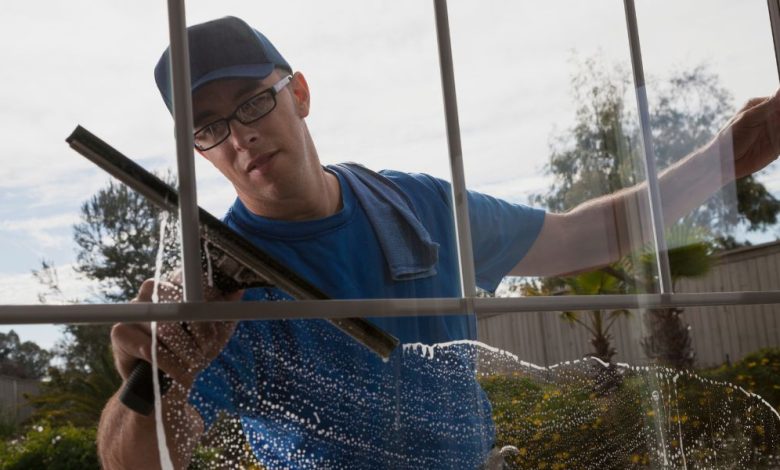What to Know About Local Codes and Window Installation
What to Know About Local Codes and Window Installation

When you’re planning a window installation, understanding local building codes is crucial. These codes dictate everything from the materials you can use to the window styles that meet energy efficiency standards. Ignoring these regulations can lead to costly fines and complications down the line. You might think you know what you need, but there are nuances that can catch you off guard. What are the specific permits you’ll need, and how can you ensure your project stays compliant? The answers could make or break your installation experience.
Understanding Local Building Codes
When installing windows, it’s crucial to understand the local building codes that govern your project. These codes dictate approved building materials and window styles, ensuring safety and efficiency.
You’ll need to verify the specific requirements in your jurisdiction, as they vary significantly. For instance, some areas may mandate energy-efficient window styles or specific types of glazing.
Additionally, codes often outline structural considerations, such as load-bearing capacities and weather resistance, especially in regions prone to severe weather.
Failing to comply with these regulations can lead to costly fines or necessitate rework. Always consult the local building authority to ensure your window installation adheres to the latest standards, minimizing risks and optimizing your project’s success.
Importance of Compliance
Compliance with local building codes is essential for any window installation project. Adhering to these regulations ensures your installation techniques meet safety standards, enhancing structural integrity.
Non-compliance can lead to legal repercussions, costly fines, and the potential need for reinstallation, compromising both time and resources. Moreover, following these codes helps maintain window aesthetics, ensuring that your windows not only function properly but also complement the design of your home.
Proper compliance fosters energy efficiency, which can significantly reduce your utility bills. Ultimately, you’re not just installing windows; you’re investing in your property’s value and safety.
Prioritizing adherence to local codes will safeguard your investment and provide peace of mind throughout the installation process.
Types of Window Regulations
Understanding the types of window regulations is vital to ensure your installation meets all necessary standards. Regulations often address various window styles, including double-hung, casement, and sliding windows, as each may have specific requirements.
Additionally, local codes dictate the acceptable installation materials, such as vinyl, wood, or aluminum, which must conform to performance standards for durability and energy efficiency.
You’ll also need to consider regulations regarding thermal performance, which can influence your choice of glazing and insulation methods.
It’s essential to familiarize yourself with these stipulations to avoid potential violations and ensure your windows adhere to safety and energy regulations.
Complying with these regulations not only protects your investment but also enhances the overall efficiency and safety of your home.
Permits Required for Installation
Obtaining the necessary permits for window installation is crucial for ensuring compliance with local building codes.
Failing to secure these permits can lead to delays, fines, or even the need to redo your work.
Here’s what you should consider:
- Installation timelines may be extended due to permit processing.
- Permit fees can vary, impacting your overall budget.
- Non-compliance can result in fines and legal issues.
- Unpermitted work can complicate future property transactions.
- Inspectors may require adjustments, adding to your stress.
Energy Efficiency Standards
When you’re planning a window installation, adhering to energy efficiency standards is essential for both performance and compliance with local regulations.
These standards often mandate the use of sustainable materials and advanced window technology to enhance thermal performance. By selecting windows with high R-values and low U-factors, you ensure better insulation, reducing energy consumption.
Additionally, look for ENERGY STAR® ratings, which signify compliance with national efficiency benchmarks. Incorporating features like double or triple glazing and low-emissivity coatings can further improve energy efficiency.
Remember, meeting these standards not only helps the environment but also lowers your utility bills and increases your property’s value.
Always check local codes for specific requirements regarding energy-efficient windows to maintain compliance during installation.
Safety and Structural Requirements
Compliance with energy efficiency standards sets the stage for addressing safety and structural requirements during window installation.
To ensure your installation meets these critical standards, focus on the following aspects:
- Window Materials: Use materials that comply with local codes for durability and safety.
- Installation Techniques: Employ techniques that ensure proper sealing and fit to prevent air leaks.
- Load-Bearing Support: Verify that the window frame can support the weight of the window and surrounding structure.
- Weather Resistance: Ensure that windows are resistant to local weather conditions to enhance safety.
- Emergency Egress: Confirm that windows meet egress requirements for emergency escape routes.
Common Violations to Avoid
Installing windows without adhering to local codes can lead to serious violations that may compromise safety and increase liability.
One common violation involves improper window placement; failing to meet minimum height or egress requirements can restrict emergency exits and pose safety risks.
Additionally, if your property is in a designated historical preservation area, alterations that don’t align with local regulations can result in penalties.
It’s crucial to maintain the architectural integrity of your home while ensuring compliance with any restrictions on style and materials.
Not obtaining the necessary permits can also lead to fines and project delays.
Always verify local guidelines before starting your window installation to avoid these common pitfalls and safeguard your investment.
Working With Professionals
Partnering with professionals for window installation ensures adherence to local codes and enhances the overall integrity of your project.
When selecting a contractor, consider these key factors to ensure a successful outcome:
- Experience with local regulations: They’ll navigate compliance seamlessly.
- Knowledge of current window design trends: Aesthetic and functional choices matter.
- Strong references and reviews: Trustworthiness is crucial.
- Transparent pricing structures: Avoid surprises down the road.
- Warranty and post-installation support: Assurance of quality and service.
Utilizing these contractor selection tips won’t only safeguard your investment but also provide peace of mind.
Tips for Homeowners
When planning your window installation, understanding local codes is essential to ensure your project meets all necessary regulations.
Familiarize yourself with the specific window styles permitted in your area, as some codes may restrict certain designs based on aesthetic or safety considerations.
Additionally, be aware of approved installation techniques; improper methods can lead to structural issues or code violations.
Ensure that your selected contractor is knowledgeable about these codes and can provide documentation for compliance.
Before starting, obtain any required permits to avoid fines or delays.
Lastly, keep records of all communications and approvals for future reference.
Adhering to these guidelines will help you achieve a successful installation while adhering to local regulations.
Resources for Code Information
To navigate local window installation codes effectively, it’s crucial to access reliable resources that provide up-to-date information.
Utilizing these resources will ensure compliance and enhance the safety and efficiency of your installation project. Here are some key resources you should consider:
- Local government websites: Often offer the latest code updates.
- Building departments: Direct contact can yield specific requirements for your area.
- Trade associations: Provide guidelines and standards relevant to window installation.
- Professional contractors: Their expertise can clarify complex regulations.
- Online forums: Communities can share experiences and insights on local codes.
Why You Choose Pure Energy Window Company
When it comes to window installation, Pure Energy Window Company stands out as the top choice for homeowners seeking quality, efficiency, and style. Our commitment to using energy-efficient materials ensures that your new windows not only enhance the aesthetic appeal of your home but also contribute to significant energy savings. Our skilled team of professionals delivers seamless window installation with precision and care, guaranteeing your satisfaction from start to finish. Choose Pure Energy Window Company for reliable service, expert craftsmanship, and unparalleled energy efficiency in every window installation.
Conclusion
In conclusion, navigating local codes for window installation is crucial for both safety and compliance. For example, a homeowner in Seattle faced fines after installing non-approved windows, which ultimately delayed their project. To avoid such issues, ensure you understand the regulations, secure the necessary permits, and consult with experienced professionals. By doing so, you’ll not only enhance your home’s value but also ensure a smoother installation process that adheres to local standards.
Media Contact :
Pure Energy Window Company
42850 Schoenherr Rd Suite 7, Sterling Heights, MI 48313, United States
(586) 501-8222









